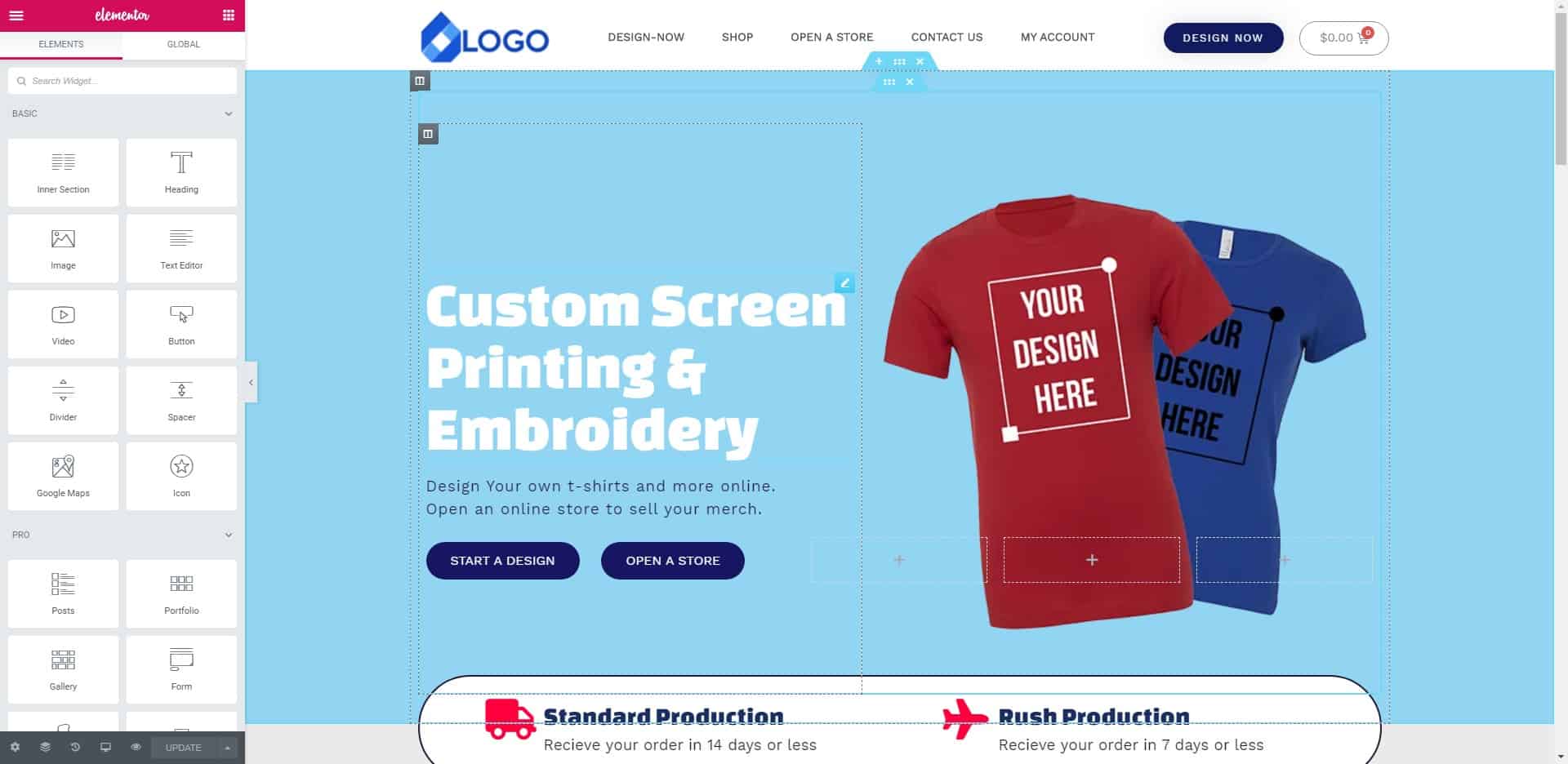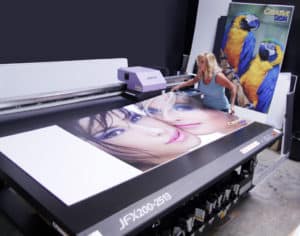
Are you tired of using traditional printing methods for apparel decorating that produce low-quality graphics? Look no further than Direct-to-Film (DTF) Printing. DTF is an innovative process that allows you to print high-resolution designs directly onto your garment with no transfer paper needed. In this blog, we will cover everything you need to know about DTF printing – from the printing process, equipment and costs, to the benefits and limitations of DTF printing. We’ll also answer the question on everyone’s mind: can DTF printing replace DTG and sublimation? Join us as we explore why DTF printing is considered the future of apparel decorating.
What is Direct-to-Film Printing?
Direct-to-Film (DTF) printing is a digital technique where the design is printed directly onto a thin layer of film, which is then applied to the garment using heat and pressure. It offers more color options and greater detail than screen printing, without needing pre-treatment or post-curing, making it efficient and cost-effective.
The DTF Printing Process
By using the DTF printing process, decorators can achieve vibrant designs of high-resolution with durability on t-shirts, sportswear, water bottles, signage, vinyl & more. This versatile apparel decoration option substitutes screen printing or sublimation. The DTF printer and PET film with heat press transfer technology make the process efficient for both small & large scale orders. The final product fabric colors are not limited to white due to its CMYK plus white ink capabilities.
Setting Up for DTF Printing
For optimal Direct-to-Film (DTF) printing setup, selecting the appropriate DTF printer and ink is crucial. The artwork should be prepared using the right software and settings to obtain high-quality DTF prints. Using high-quality transfer film in conjunction with correct heat press settings helps achieve durability and vibrant designs. To enhance color vibrancy and durability further for apparel decoration fabric colors such as polyester can be considered by decorators for their final product.
DTF Printer and Software
To achieve high-quality DTF prints, it is essential to have a specialized printer equipped with white ink capable of handling thick transfer films. Ensuring the image is properly aligned on the substrate requires DTF software with features like color correction and print optimization. Investing in high-quality DTF equipment resellers offer can help decorators keep up with new technologies in apparel decoration.
PET Films and Hot Melt Adhesive Powder
When it comes to Direct-to-Film Printing, PET films play a crucial role in transferring designs onto fabric effectively. These specialized films come in various thicknesses and finishes, affecting the final look of prints. Selecting the appropriate PET film and adhesive powder is vital to achieve optimal printing results based on your printing needs and fabric type. Also, proper handling and storage of these materials ensure durable and vibrant prints that enhance your garment’s appeal.
Printing Inks and Heat Press
Choosing the appropriate printing inks and heat press is vital for achieving accurate and durable prints when using direct-to-film (DTF) transfer technology for apparel decoration. High-quality inks must firmly bond to the film and substrate. The heat press is responsible for transferring ink onto fabrics at a consistent temperature, ensuring the final product sets properly. Consider your production needs when selecting equipment that provides vibrant designs with versatile results.
Cover Sheet and Automation Systems
Achieving high-quality and durable prints through direct to film (DTF) printing is possible by investing in the right tools and equipment. Using a cover sheet made from Teflon or silicone to protect the print head during printing is essential to ensure accurate ink transfer onto the fabric substrate. Additionally, incorporating automation systems such as vacuum tables or roll-to-roll systems can help decorators improve their production efficiency and accuracy. By taking these steps into account while setting up for DTF printing ensures vibrant designs on apparel items with good durability.
Understanding the Costs of DTF Printing
When it comes to understanding the costs of DTF printing, decorators need to consider multiple factors beyond just the primary keyword “Direct to film printing is the future of apparel decorating.” This includes weighing the upfront investment in equipment/supplies, ongoing ink/maintenance expenses, time/labor costs, and more. By choosing high-quality heat presses, cover sheets, and automation systems like vacuum tables or roll-to-roll setups, decorators can improve efficiency while producing durable prints with vibrant designs. Ultimately, careful consideration of these factors can help decorators determine if DTF printing is a worthwhile investment for their business.
Equipment, Consumables, and Labor
DTF printing is an apparel decorating method that requires a significant initial investment in equipment, including a DTF printer and software. Consumables such as ink and transfer paper also contribute to the overall cost of DTF printing. Labor costs include setting up and cleaning the equipment, as well as the actual printing process. Although it has higher upfront costs than other methods like screen or DTG printing, investing in DTF technology pays off big time with its high-quality prints and faster turnaround times.
ROI Calculation Samples
To determine whether it’s profitable to use DTF printing technology for apparel decoration requires an understanding of ROI (Return on Investment). Cost factors such as equipment and supplies investment plus maintenance and repair expenses need to be factored against revenue generated from DTF printing services. Small businesses must consider their size, target markets, and demand for custom apparel when determining if they should invest in DTF printing.
Benefits and Limitations of DTF Printing
Direct-to-Film (DTF) printing is one of the latest new technologies in the garment printing industry that decorators are adopting quickly. The process offers many advantages such as versatility in printing on various fabrics including polyester, vibrant designs with gradients printed with CMYK colors, faster turnaround times compared to screen or vinyl signage printing. However, DTF prints are limited by the durability of its ink and powder adhesive used during the transfer process. The setup can be complex at first due to many variables like artwork preparation, printer calibration, substrate selection, shaker settings for white ink recirculation so it might require some trial and error before obtaining consistent high-resolution prints.
Versatility and Graphics Quality
When it comes to versatility and graphics quality in apparel decoration, DTF printing is an excellent option as it provides great choices for fabric and material selection. The DTF printing process offers high-quality graphics that are not only long-lasting but also highly durable. Even though there might be some limitations regarding design patterns or certain types of artwork due to its need for specialized skills and expertise, factors like cost-effectiveness should always be considered before making a final decision.
Pricing and Setup Time
Considering the bottom line, pricing and setup time play a crucial role in making the DTF process affordable. When compared to traditional screen printing methods, DTF is proven to be a more cost-effective solution, especially for small businesses with smaller quantities. Not only does it provide quick turnaround times but also ensures long-term cost savings and benefits such as durability and vibrant designs. In essence, resellers who want to move their business to the next level should definitely consider this new technology.
Garment and Ink Compatibility
To achieve high-quality and durable prints using Direct-to-Film (DTF) printing technology for apparel decoration, it is essential to choose the right combination of garments and DTF inks. The substrate must withstand high levels of pressure and heat during the transfer process. DTF inks are best suited for cotton blends and polyester fabrics. With a wide range of compatible materials available, decorators can create vibrant designs on various types of fabrics using DTF printers without compromising on durability.
Can Direct-to-Film Printing Replace DTG and Sublimation?
Direct-to-film printing is a novel technology that offers high-quality and vibrant prints on dark fabrics. While DTG and sublimation have their own strengths, direct-to-film printing has its own unique advantages. The choice between the three depends on individual business needs and preferences.
Conclusion
In conclusion, Direct-to-Film Printing is an innovative technology that offers a new way of decorating apparel. It provides high-quality prints that are durable and long-lasting. The process itself is relatively easy to set up, and the cost is not prohibitive. While there are some limitations to the process, the benefits far outweigh them. DTF printing offers versatility in graphics quality, pricing, and setup time. It can also work with a wide range of garments and inks. This technology has the potential to replace DTG and sublimation printing in the future. If you want to learn more about how to get started with DTF printing or how it compares to other printing methods, contact us today for a free demo and consultation.
Share this post
Recent Posts


What is CRM Software
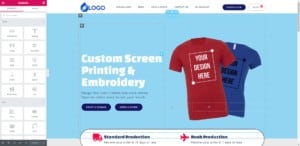
Announcing DIY Plans
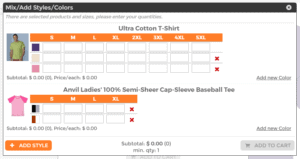
Feature Spotlight- Mix Styles and Colors

Website redesign for your print shop.
Newsletter
Related Posts
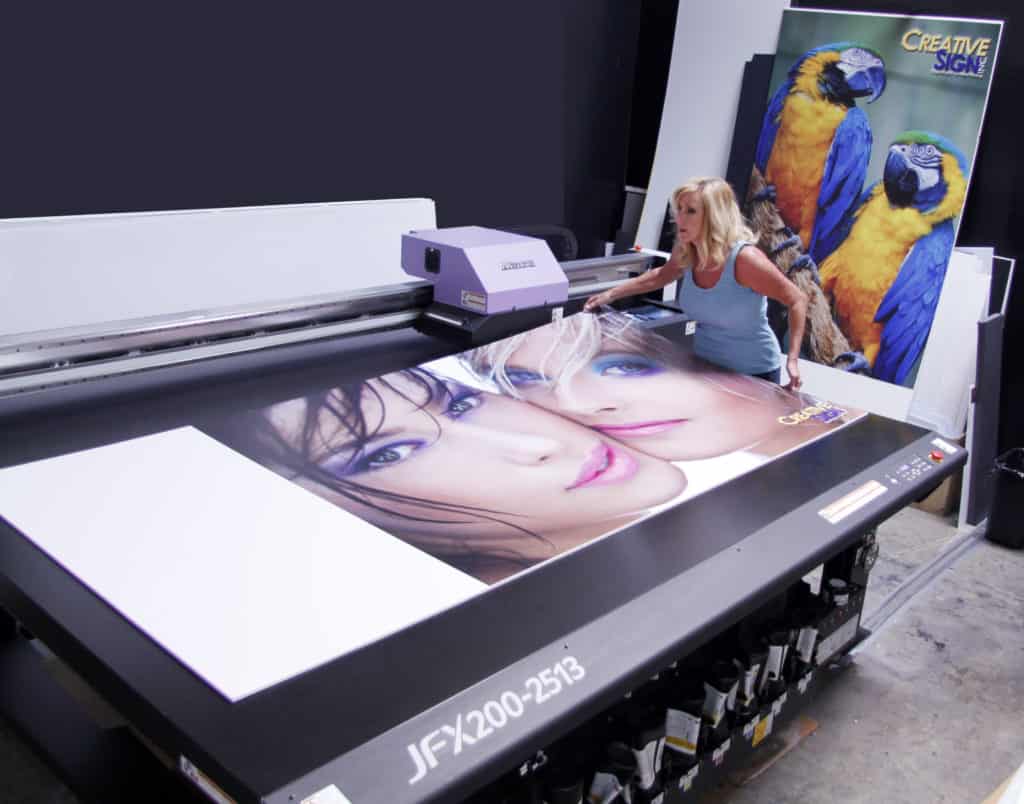
Websites For Sign Shops and Large Format Printers

What is CRM Software
